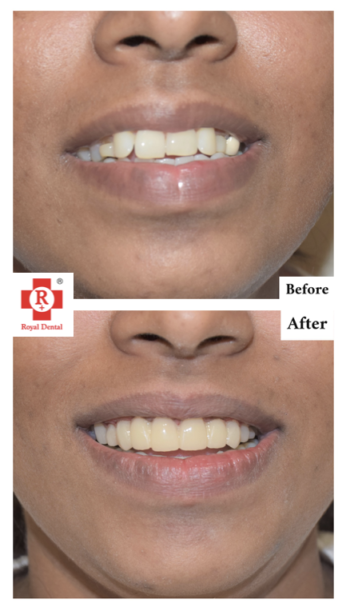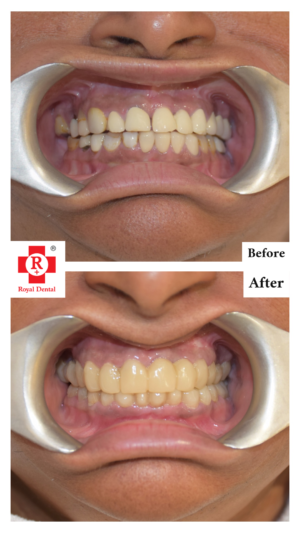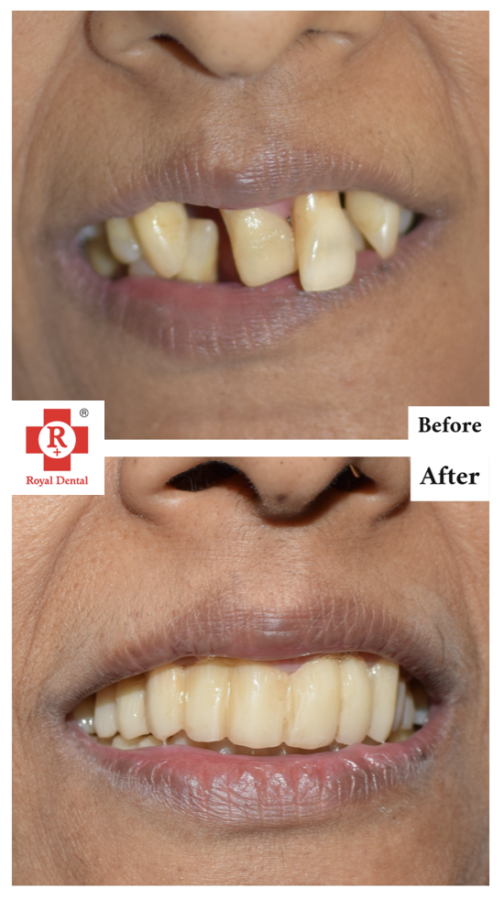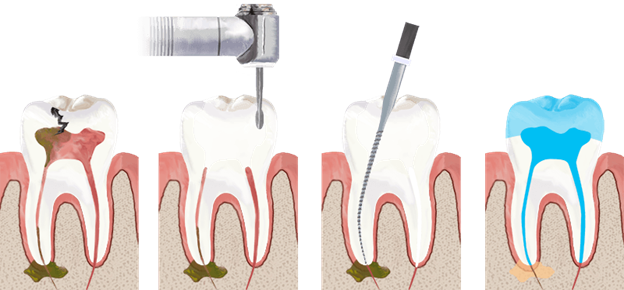Root canal therapy is a common procedure that helps to save a damaged or diseased tooth from requiring extraction. Often, root canal treatment is a multi-visit process, but recent advancements in dentistry have made it possible to complete the entire procedure in a single visit. With the ability to save time and expense, this advanced procedure has become increasingly popular. However, it is important to understand what a one-sitting root canal entails and whether it is the right choice for you and your dental needs. Read on to learn more about one-sitting root canals, and the benefits they offer.
What is the one-sitting Root Canal procedure?
A one-sitting root canal procedure is a type of endodontic treatment that is specifically designed to be completed in a single visit. Your dentist will clean and shape the interior of the affected tooth, remove any damaged or infected tissue, and then fill the tooth with a rubber-like material called gutta-percha. This procedure is typically performed under local anaesthesia and can be completed in as little as one hour.
A root canal treatment is a dental procedure that is used to remove infected or damaged tissue from the inside of a tooth. The treatment involves removing the infected pulp, cleaning the root canal, and then filling the canal with a material to seal it.
One-sitting root canal treatment is a type of root canal procedure that can be completed in a single visit to the dentist’s office. This type of treatment is typically recommended for patients who have mild to moderate dental problems and whose teeth are not severely infected.
Benefits of one-sitting Root Canal treatment?
The main benefit of a single-sitting root canal is that they allow the entire procedure to be completed in a single visit. This can save patients both time and money, as there is no need to schedule multiple appointments and pay for additional office visits. In addition, one-sitting root canals are faster and less invasive than traditional multi-visit root canal procedures, as they do not require any incisions or sutures. Finally, a one-sitting root canal can help to reduce the risk of infection and further damage to the affected tooth.
Time-saving: One of the most significant advantages of one-sitting root canal treatment is that it can be completed in a single visit, saving the patient time and reducing the need for multiple appointments.
Less discomfort: Because the entire procedure is completed in one visit, the patient may experience less discomfort and pain than they would with a traditional root canal treatment that requires multiple visits.
Root Canal Treatment Before After Case Studies



Faster healing time: Since the entire procedure is completed in one visit, the healing time is typically faster than with a traditional root canal treatment, which may take several weeks to complete.
Cost-effective: One-sitting root canal treatment may be more cost-effective than traditional root canal treatment, as it reduces the number of visits required and the associated costs.
Improved oral health: Root canal treatment can help to save a damaged or infected tooth, which can improve overall oral health and prevent the need for tooth extraction.
Preservation of natural tooth: One-sitting root canal treatment can help to preserve the natural tooth and maintain proper chewing and speaking abilities.
During single-sitting Root Canal procedure
During a one-sitting root canal treatment, the dentist will numb the area around the affected tooth and then use specialized tools to remove the infected pulp from the root canal. Once the pulp has been removed, the root canal will be cleaned and filled with a material to seal it. The entire procedure can usually be completed in about one to two hours. It is important to note that not all patients are candidates for one-sitting root canal treatment.
Patients with severe dental problems, multiple root canals, or who have had previous dental work on the affected tooth may require more than one visit to complete the procedure. It is also important to follow proper aftercare instructions following a root canal treatment to ensure the best possible outcome. This may include avoiding certain foods and drinks, taking prescribed medication, and maintaining good oral hygiene practices.

Procedure for one-sitting Root Canal procedure
Assessment: The dentist will perform a thorough examination, take x-rays and determine if a one-sitting root canal treatment is appropriate for the patient’s condition.
Anesthesia: The dentist will administer local anesthesia to numb the tooth and surrounding area.
Access to the tooth: The dentist will create an opening in the top of the tooth to access the pulp and root canal.
Cleaning the root canal: The dentist will use specialized instruments to remove the infected or damaged pulp from the root canal, and then shape and clean the canal to prepare it for filling.
Filling the root canal: The dentist will fill the root canal with a biocompatible material, such as gutta-percha, to seal the canal and prevent further infection.
Restoring the tooth: Once the root canal is filled, the dentist will typically place a filling or crown on the tooth to restore its shape, strength, and function.
Follow-up: The patient will be given post-treatment instructions, including how to care for the tooth and when to schedule a follow-up visit to monitor the healing process.
Who is an ideal candidate for one-sitting root canal?
Not everyone is a good candidate for single-sitting root canals. The ideal candidate is someone who has a tooth that is not severely damaged or infected, and who does not have any underlying medical conditions that could complicate the procedure. People with teeth that are heavily decayed or infected may require a more complex procedure and should discuss their options with their dentist.
The entire procedure may take several hours to complete, depending on the complexity of the case and the dentist’s techniques. Patients should discuss any concerns or questions they have about the procedure with their dentist before the treatment.
As with any dental procedure, there are some risks associated with one sitting root canal. These include the risk of infection, tooth fracture, and nerve damage. Additionally, since the entire procedure is completed in a single visit, there is no time for sedation or pain management. Therefore, it is important to discuss any concerns with your dentist before undergoing the procedure.
Costs associated with one-sitting Root Canal treatment
The cost of a one-sitting root canal treatment can vary depending on several factors, including the location, the complexity of the procedure, the dentist’s experience and expertise, and whether the patient has dental insurance. In general, a one-sitting root canal treatment can be more cost-effective than a traditional root canal treatment that requires multiple visits.
On average, the cost of a one-sitting root canal treatment in the United States can range from $700 to $1500 per tooth, but may be higher in certain regions or for more complex cases. This cost typically includes the cost of the procedure, the anesthesia, and any necessary follow-up appointments.


Patients with dental insurance may have some or all of the costs of the root canal treatment covered, depending on their plan and the terms of their coverage. It is important for patients to check with their dental insurance provider to determine what portion of the cost, if any, will be covered.
Patients should also discuss any concerns they have about the cost of the procedure with their dentist. Some dental practices offer payment plans or financing options to help patients manage the cost of the treatment. Additionally, some dental schools or community health clinics may offer discounted rates for certain dental procedures, including root canal treatments.
How long does a one-sitting root canal last?
Typically, a one-sitting root canal will last for many years, just like a traditional multi-visit root canal. However, as with any dental procedure. It is important to practice good oral hygiene to ensure the longevity of the treatment. This includes brushing and flossing regularly, as well as visiting your dentist for regular check-ups.
A one-sitting root canal treatment can last a long time if the patient takes proper care of their teeth and follows good oral hygiene practices. The success of the root canal treatment will depend on several factors, including the severity of the infection, the quality of the treatment, and the patient’s commitment to maintaining good oral health.
On average, a successful root canal treatment can last a lifetime with proper care, such as daily brushing and flossing, regular dental check-ups and cleanings, and avoiding hard or chewy foods that can damage the tooth.
It is important to note that although a root canal treatment can save a damaged or infected tooth, the tooth may still be vulnerable to decay or damage over time, especially if the patient does not follow good oral hygiene practices or if they continue to engage in habits such as smoking or chewing tobacco.
Regular dental check-ups and cleanings can help to identify any issues early on and prevent further damage to the tooth. If the tooth does become damaged or infected again, additional dental procedures may be necessary to address the problem.
During the one-sitting root canal procedure, you will likely experience some mild discomfort. Your dentist may also use a local anaesthetic to help minimise any discomfort. After the procedure, it is important to follow your dentist’s instructions for care and to take any medications prescribed by your dentist. Additionally, you may experience some soreness and swelling at the site of the procedure. Which should subside after a few days.
Recovery process
The recovery process for a one-sitting root canal is typically quick and easy. After the procedure. You may need to take some time off from work or school to allow your body to heal. You should also avoid physically exerting yourself or participating in any strenuous activities during this time.
Additionally, you should follow your dentist’s instructions for aftercare. Which may include taking medications, using a cold compress, and avoiding stressful activities.
Conclusion
One-sitting root canals are becoming increasingly popular due to the convenience and cost savings they offer. This advanced procedure can be completed in a single visit, and typically results in minimal discomfort. However, it is important to discuss your options with your dentist to determine if one-sitting root canals are the best choice for you and your dental needs.
With the assistance of our skilled doctors, patients receive several root canal procedures and dental crowns on the same day at Royal Dental Clinics. At Royal Dental Clinics, we firmly believe that patients are the best arbiters of the caliber of dental care and the level of customer service received at any dental office.
Suggested Article:
Signs You Need a Root Treatment
Follow Us For More Updates





